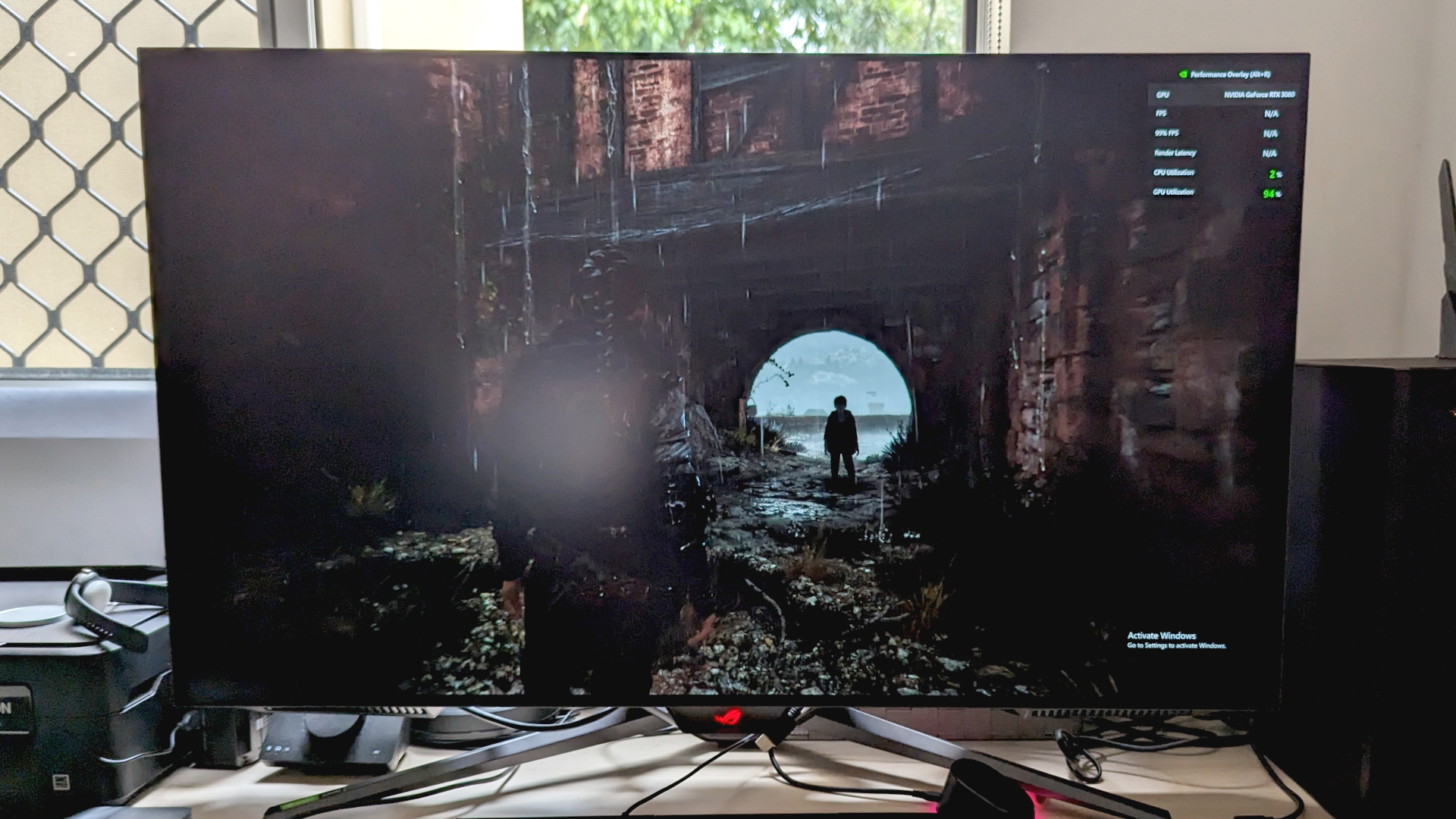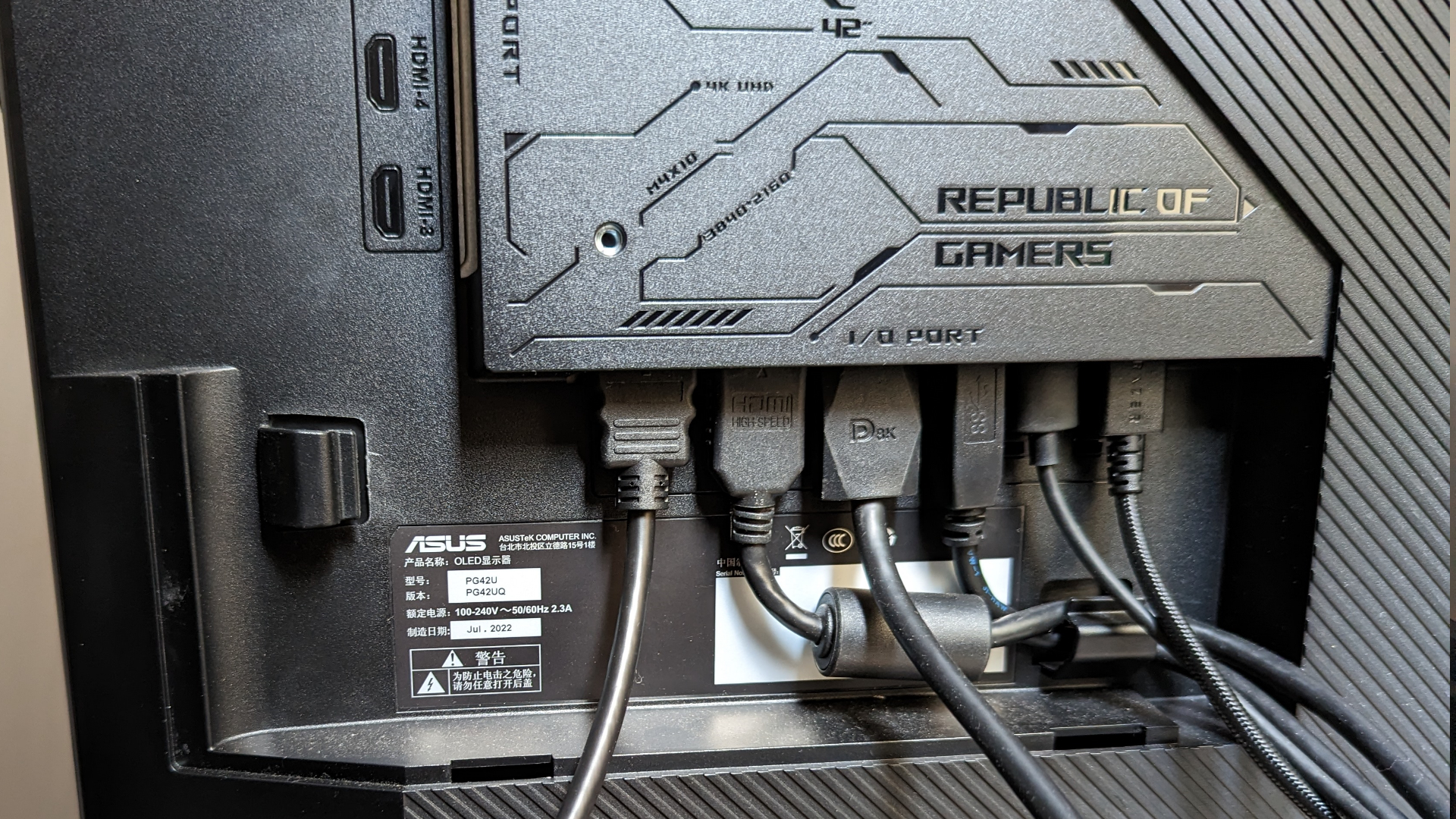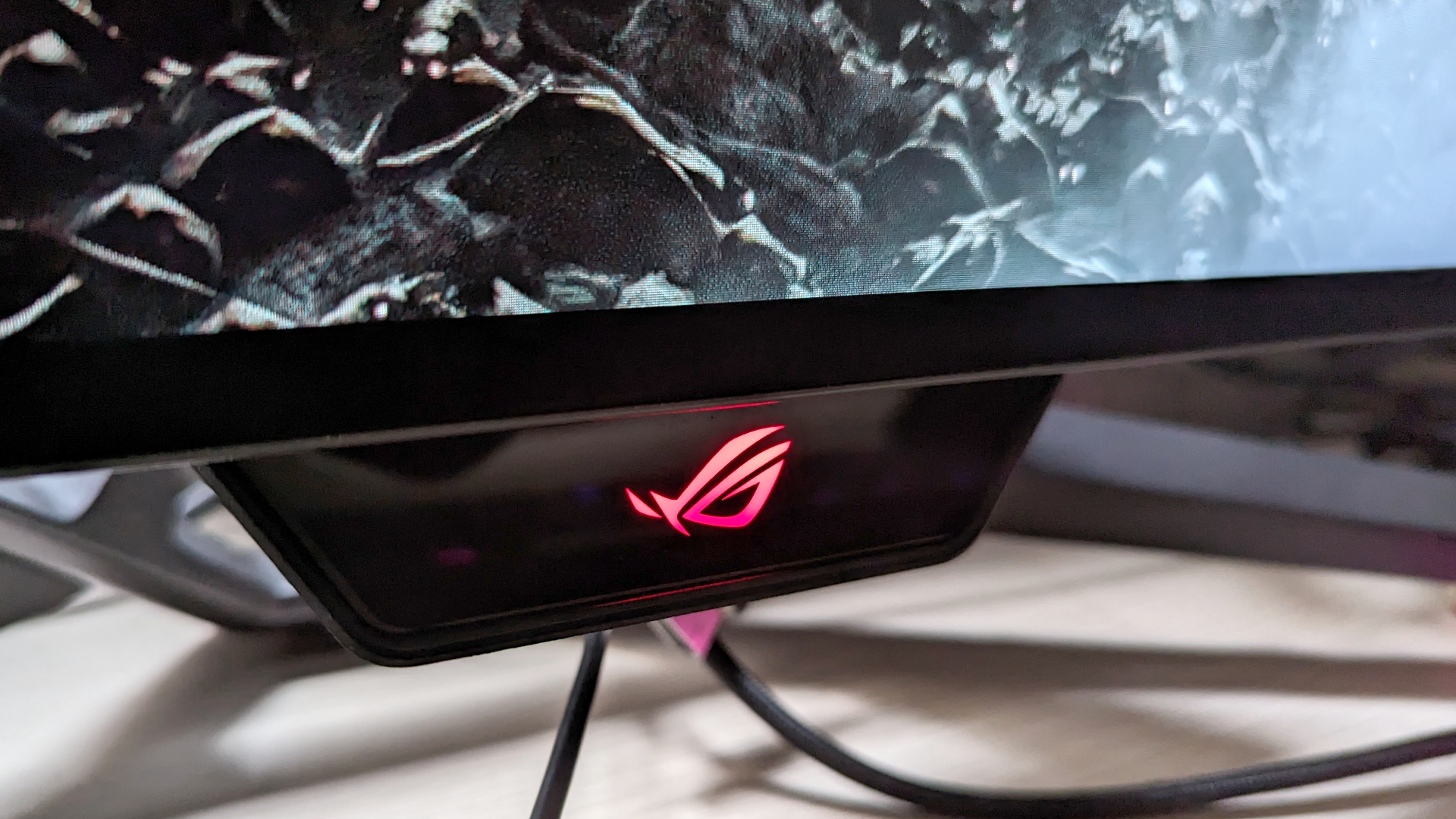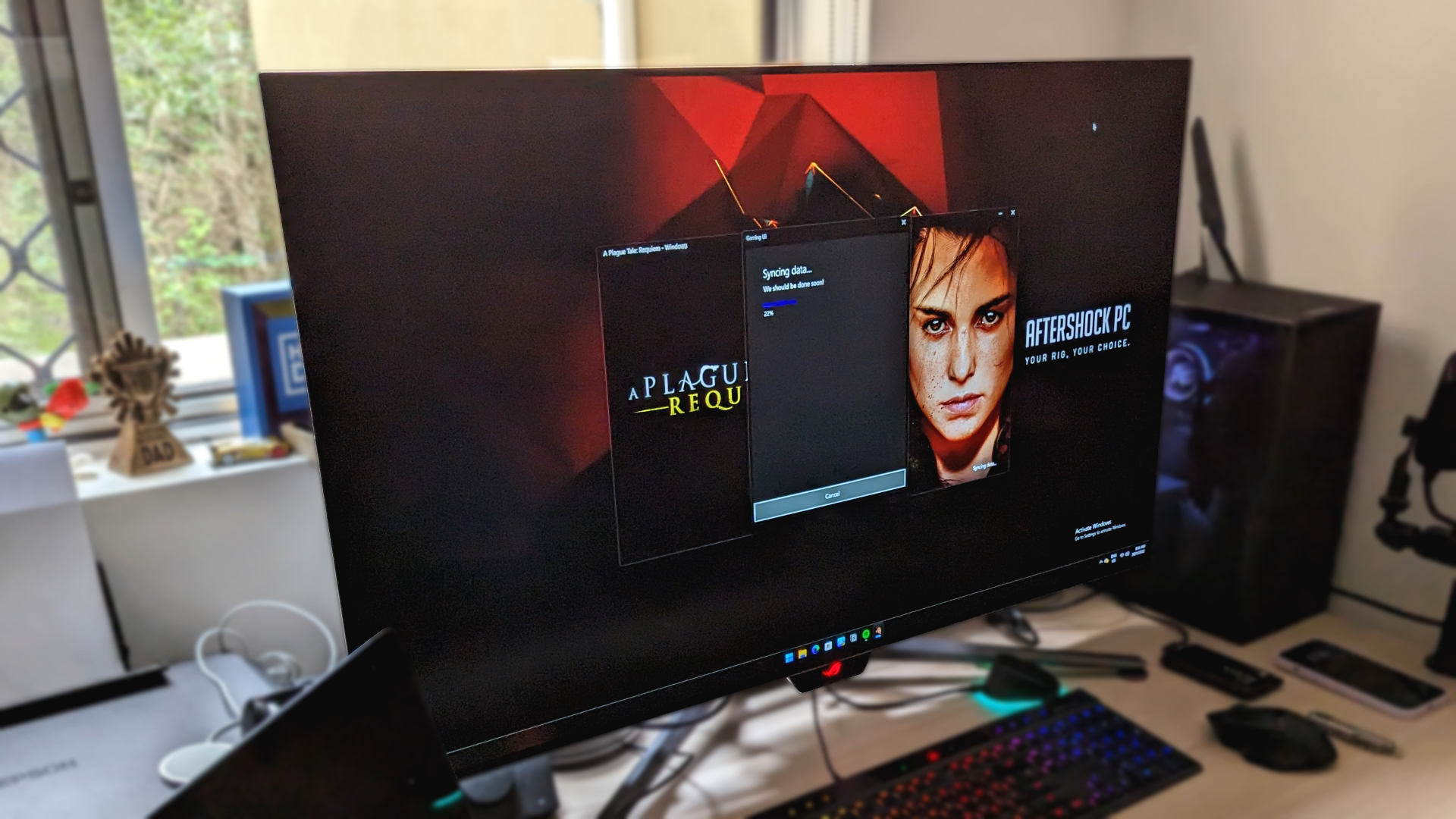Our Verdict
The PG42UQ is phenomenal for gaming with excellent OLED color, HDR and plenty of quality of life features that differentiate this from its progenitor, the LG C2. It has its flaws, but pops where it matters most.
For
- OLED for deep blacks
- Fast response and high refresh
- 42-inch is the best large desktop size
- Impressive array of ports & features
- G-Sync compatible
Against
- Low pixel density & text color fringing
- OLED = risk of burn-in
- No height or swivel adjustment
- 42-inch LG C2 is cheaper with similar performance
PC Gamer's got your back
High speed OLED gaming monitors are finally legit. That's thanks in no small part to Alienware's impressive AW324DW QD-OLED, with plenty of other brands following suit. Among them, Asus has unleashed the ROG Swift PG42UQ OLED, a 41.5-inch behemoth that legitimately could be the only monitor you'll ever need for the foreseeable future of gaming. Leveraging the same panel from the LG C2 OLED TV, the Swift PG42UQ adds on higher refresh rate, an anti-glare coating, DisplayPort 1.4 and more gaming monitor accoutrements. The result is one of the best 4K gaming monitors around.
The main question is whether it's worth the $1,399 price tag. At that price it's more expensive than LG's 42-inch C2, but it does a few things better for the premium. Firstly, it works like a proper monitor and not a smart TV. One huge irritant with Smart TVs is they can't wake and sleep in tandem with your PC, necessitating manual control. Not so with the Swift PG42UQ which works just like any monitor and even has USB upstream. In conjunction with its four USB downstream ports can make plugging in your peripherals so much easier. Take that C2!
Very importantly though, it comes in with a 138Hz refresh, over the C2's 120Hz. It's only a small improvement, but will be appreciated for anyone packing one of the best graphics cards out there right now. Throw in 0.1ms (2ms GTG) response time, as well as G-Sync compatibility, and Asus is onto a winner.
One thing to note is that nowhere in the official spec does it say FreeSync, though in order to be G-Sync compatible we assume the VRR works for the red team.
Panel size: 41.5-inch
Native resolution: 3840 x 2160
Refresh rate: 138Hz
Response time: 0.1ms MPRT (2ms GTG)
Panel type: OLED
Peak brightness: 450 cd/m² typical
Sync tech: G-Sync compatible
Inputs: 1x DisplayPort 1.4, 2x HDMI 2.1, 2x HDMI 2.0, 4x USB 3.2 Type-A, 1x USB 3.2 Upstream, 3.5mm
Price: $1,400 (US) | £1,399 | $2,299 (AUS)
Of course, the Swift PG42UQ is also an OLED, which almost immediately gives it an advantage over the competition in terms of color accuracy, contrast and response. 1,500,000: 1 contrast ratio is no joke; it makes the 10-bit color pop and sizzle. While the matte display dulls things a bit compared to glossy C2, it still looks amazing and works wonders for rejecting pesky reflections. And with 98% DCI-P3 and 133% sRGB color space with a Delta of E<2, it's pretty good for professional content creation and color work, too.
Out of the box, colors are already amazing, with rich saturation, vibrance and contrast. There are several color profiles to pick from the OSD including dedicated DCI and sRGB modes. Dive into the OSD and you can easily calibrate the monitor to your liking. SDR brightness peaks out about 450 nits and up to 750 nits in HDR. Not the brightest but with perfect blacks, who needs more brightness?

And HDR is absolutely stunning on the Swift PG42UQ. In dark, moody games like Resident Evil Village or A Plague Tale: Requiem, I found it hard not to be legitimately spooked in those dark corridors. Destiny 2: The Witch Queen bursts with rich, vibrant color—in Throne worlds, in fact, the solar grenades actually blind momentarily on explosion.
At 42 inches, it’s not the biggest panel ever but it's plenty to completely fill your vision and pixel peep. The size does stretch the limits of pixel density, though, and I noticed the text and icons aren't quite as sharp as I'd have liked. The problem of color fringing around text, especially on white backgrounds, is typical with LG OLED, though it's not as bad here as it can be. Windows Cleartype helps remedy the problem, as well as sitting a little bit further back from the screen. I found about 3-4 feet was good enough but if you do a lot of reading/writing, stick to dark mode to avoid eye strain. That's not going to be easy if you don't have a lot of desk space, however.

The stand on the PG42UQ isn’t too dissimilar from a TV stand—it’s wide but not too deep, leaving plenty of room in front of the monitor. While it does give you 5 degree tilt, there’s no height or swivel adjustment, so if you want more range of motion VESA mounting is your only option. Since the monitor sits so low on its stand, Asus has wisely put the ports panel on the left backside for easy access. There are two HDMI 2.1 ports, two HDMI 2.0, and a DisplayPort 1.4. That's alongside the USB upstream and four USB 3.2 Type-A downstream.
Asus has even added a quarter-inch screw threading at the top of the monitor to mount a streaming camera, along with an adjacent USB port to plug it in. The power port is on the far opposite side of the monitor, though, which makes cable management a bit of a pain.
In terms of sound, the PG42UQ has some of the best speakers I’ve heard on a gaming monitor. It uses Harman-Kardon speakers that get really loud without distorting, with a 15W subwoofer that offers tasty bass.

The OSD controls sit on a large tab (or chin?) at the base of the monitor in the center. It's donned with an angry red ROG logo and navigating is done via a touch sensitive joystick and buttons. Menus are clear and straightforward, so no chance of confusion, and there's even a dedicated Gaming section for overclocking, black equalizer and all the usual gaming enhancers. It also has some tricks to prevent the dreaded burn-in, including periodic pixel shift and refresh, as well as an automatic brightness limiter. Only time will tell, of course but I think if you’re mindful of the basics, burn-in shouldn’t be a problem.
The Asus ROG Swift PG42UQ absolutely slaps and I’ve thoroughly enjoyed using it for the past few weeks. The main drawback is how expensive it is, though. With LG's C2 42 coming in $300 cheaper, and offering a lot of the same experience, it's difficult to recommend the Swift for simply your average movie watcher. However, the standard C2 is not (and will never be) a gaming monitor. The Swift brings all the best parts of the C2 into the gaming space, improving it in a host of ways that gamers will be better pleased with. Sure the adjustments are limited, but the ROG Swift PG42UQ is a gamers bestie where it matters, and certainly another champion for the OLED cause.
The PG42UQ is phenomenal for gaming with excellent OLED color, HDR and plenty of quality of life features that differentiate this from its progenitor, the LG C2. It has its flaws, but pops where it matters most.
Kizzy is the consummate geek, with black turtleneck design sensibilities, always on the hunt for the latest, greatest, and sexiest tech. He's played Doom on the OG Pentium and still remembers how to hack a dial-a-phone. After four decades of being crazy about tech, he's literally just getting started. It's the age of the geek, baby!



